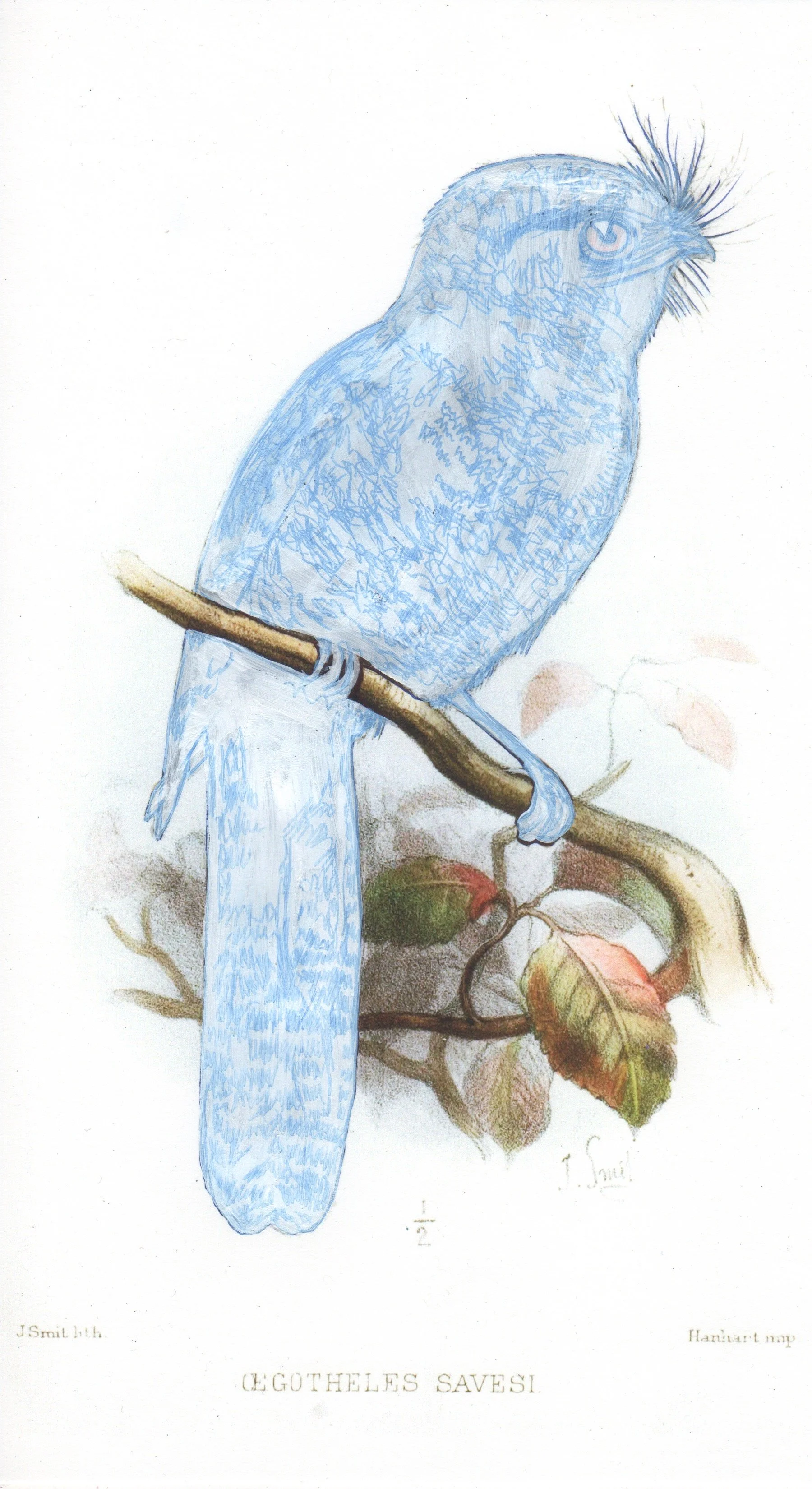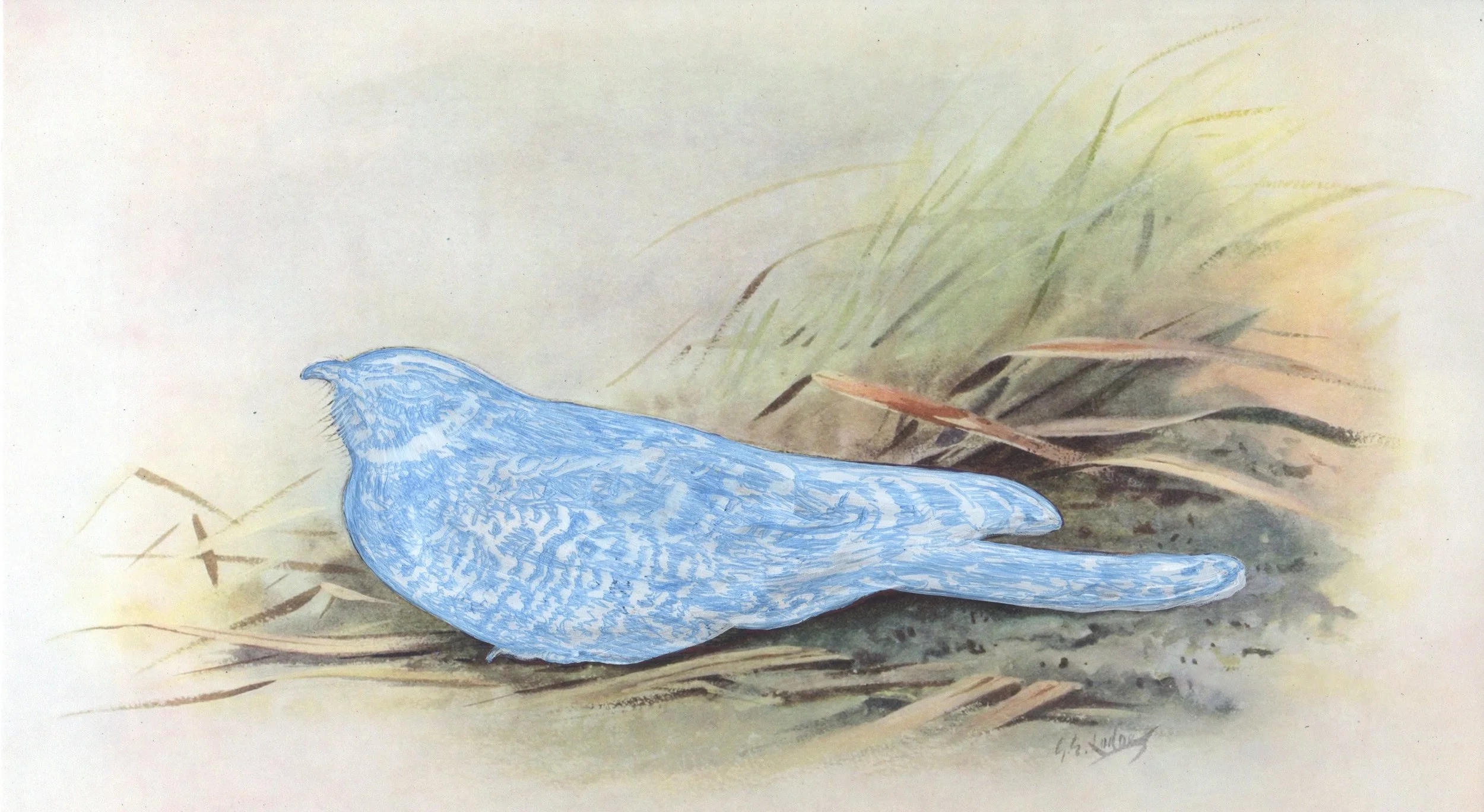Work in Progress
Gabrielle Jennings, Lost Birds Series, Jamaican Pauraque, Siphonorhis americana, last seen 1860, 2024, ink and acrylic on digital print on matte paper, 6x11”
WANTED: Lost Birds (in progress, 2025)
“Lost birds” are defined as species not having been documented by photographic, audio or genetic evidence in at least a decade. The July 23, 2024 New York Times article by Jim Robbins: “Scientists Made a List of Lost Birds and Now They Want Us to Find Them,” in which the author reports,
Some 144 bird species had not been seen in at least a decade, but a project by conservation organizations proposes they all may still be hidden somewhere in the wild... People have searched for lost birds for decades. But the process was formalized in 2020 by the conservancy, in partnership with two other groups, Re:wild and BirdLife International, as the Search for Lost Birds project. 1
This crowdsourcing methodology has miraculously already discovered some lost birds, but, “...ultimately it’ s about conservation,” said Roger Safford, Senior Program Manager for Preventing Extinctions at BirdLife International. 2
For me, repetitive drawing is a way of finding form. Through a process of combining drawings, found images, digital color separation, and, animation, I’ve developed a method whereby images appear and disappear, almost imperceptibly. With WANTED: Lost Birds, I’m using historical illustrations of scientifically identified ‘lost’ or extinct birds, and incorporating these drawings into a slowly changing, morphing video montage by using AI text to image generation, image filtering and drawing to make ‘slow-gifs’ - slowly changing, morphing videos whose methodology will be structurally similar to my most recent video Silent Spring Redux (2024), whereby 90 images generated from environmentalist Rachel Carson’s “A Fable for Tomorrow” (1962), dissolve into each other. 3 This process calls attention to fast (computer based), and slow (drawing by hand) image generation, modeling not only different bird species, but the temporal shift awareness of climate change required by humans. The resulting videos embody stillness and movement simultaneously, as each lost bird appears for a moment before dissolving out of sight.
The project questions the kind of ‘lost’ these birds are: lost, as in vanished (extinct), or ‘lost’ as in out of sight? These relate to theories around rhetorics of resistance: fugitivity and vagrancy used in relation to the othering of peoples. The video should prompt viewers to perceive others (people, or species, like birds), as individuals deserving of empathy, attention and protection. Beyond the benefits of finding lost species, it's fascinating, mysterious, and survivalist, to imagine these birds are, if not extinct, fugitive, on the run, hiding from existential, environmental threats.
1. Scientists Made a List of Lost Birds and Now They Want Us to Find Them, New York Times, Jim Robbins, August 23, 2024, accessed September 2, 2024 2. “New Search for Lost Birds Aims to Find Some of the Rarest Birds on Earth,” December 17, 2021, American Bird Conservancy, accessed September 2, 2024. 3. Silent Spring Redux, Gabrielle Jennings, 2024

